The first memories of my childhood that I can recall is that of me sitting on my bed with a blank sheet of paper and a box of crayons, making lines and circles and shapes of all kinds as the warm sunlight flooded in through the windows of the apartment. Painting was something I was always attracted to. The passion was so strong that I often chose to spend my time painting rather than going out and play. As the years passed, life brought me education, work experiences, and a growing awareness of the changing world around me. But during this time, something else has happened too. The rains in my city became less frequent. The Night flowering Jasmine or Shiuli tree that only bloomed in summers, until October, is now blooming up until the winters in February. Temperatures have risen, forests have been cleared off, and many species have gone extinct.
What bothers me the most is many people have no idea that the environment around us is changing very fast. Meanwhile, scientists have come up with alarming data that we are losing time when it comes to mitigating climate change and that reversing the damage will soon become difficult for us all.
Now, I am not a conservationist, neither am I an environmentalist, a scientist or a naturalist. My work is not directly related to conserving the environment around me, but what I do know is I am affected by this change. I love nature. I love spending my time in the hills, listening to birds, brushing my fingers across wildflowers, watching the river flow down the valley while I see the sunset – there is beauty in nature, and I love beautiful things. But to think that there will come one day when all of these things will cease to exist scares me.
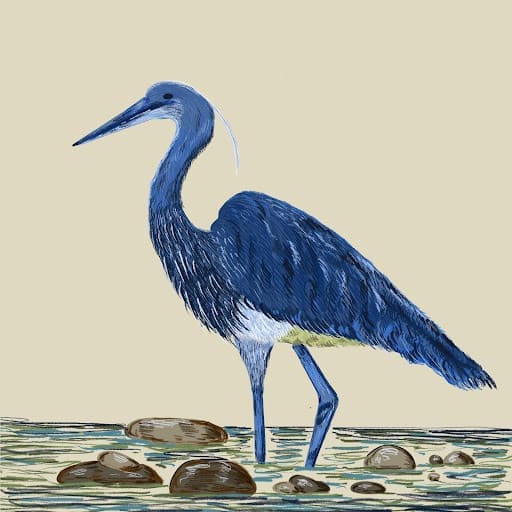
White Bellied Heron; Native to the foothills of eastern Himalayas in Northeastern India, and Bhutan to Northern Myanmar
But what can I do about it? Apart from joining nature clubs, going on field trips to plant trees, cleaning the garbage on the beach – how much can I make a change as a human being?Then one day I thought to myself, “How about I use my paintings?” I know I am good at that just like someone else is good at music or writing or embroidery. How can I channel what I innately do towards conserving the environment?
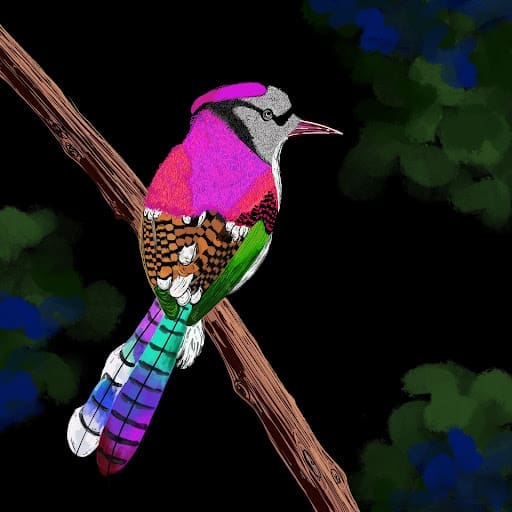
Rainbow Jaybird; Native to Western Europe, North West Africa, and Indian subcontinent
This is where I sat down and decided what it is about nature that I care the most. It did not have to be everything, maybe a thing or two. So, I came to the conclusion that the most important thing to me is the season of monsoons and birds. Inspired by the enchanting stories of Ruskin Bond, who beautifully described the charm of rains and the wonder of birds in the mountains, I delved into books that introduced me to an array of bird and insect species associated with the monsoon. While reading his stories, I came across a plethora of bird and insect species that are associated with rains and monsoon. Now I didn’t know a single bird’s name or insect name, although I could hear them all day I couldn’t identify their features, and I didn’t know when they mate, it was elusive to me. So, I made a point to at least establish a connection with these species.
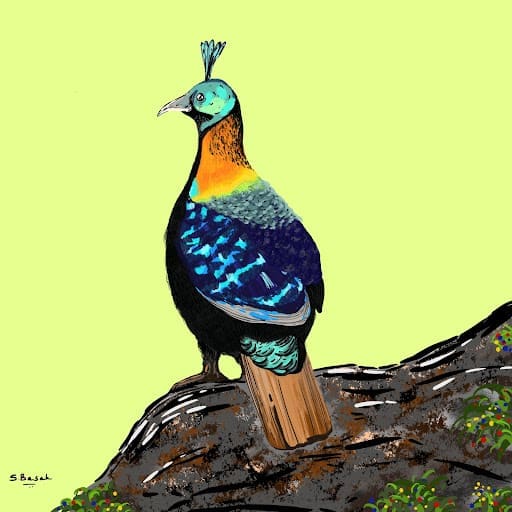
Himalayan Monal; Native to Himalayan forests and shrublands
After reading a couple of stories, I picked up my digital pen , grabbed my Ipad, and started tracing lines of a beautiful blue bird called the Whistling Thrush. This was the first step to me connecting with nature with what I do best.
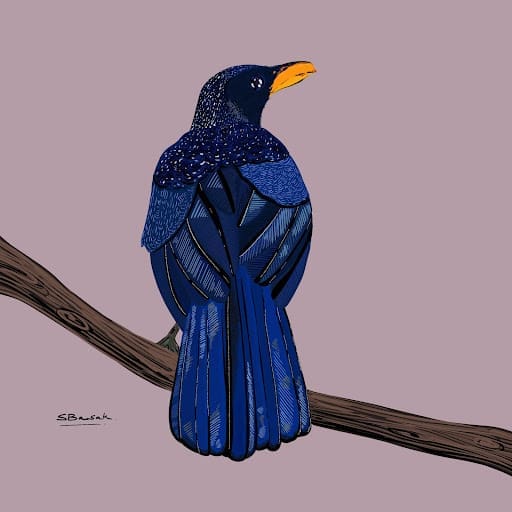
The Whistling Thrush; Native to India and South East Asia
Over the last few months I have painted multiple birds and insect species. It is my way of bettering the environment – my way of helping.

Jambu Fruit Dove; Native to Southern Thailand and Malaysia
Art is a way to explore your own true feelings and channel it to a medium. Art is self expression. Art is beauty in all forms. The language we speak, the bodies we have, the songs we sing, the work we do- all are different forms of art. In a world where there is so much happening all at once, art comes in the form of solace and a sanctuary of peace among many other things. In the face of the impending environmental crisis, art emerges as a way to communicate emotions, ideas, and concerns – touching hearts and inspiring change.
We are at a point where we are standing on the edge asking ourselves should we burn it to the ground or take the first step to make a change?
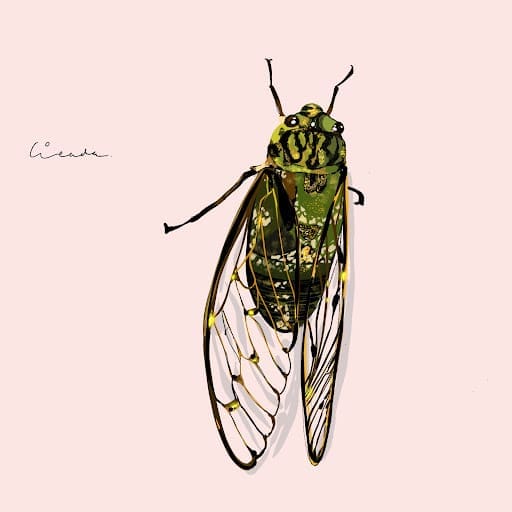
Cicada; Different species are located around the world except for Antarctica
But I think to make a change one has to remember to fall in love with the nature around them. Especially when this love does not give you a monetary output or product that we are so used to getting in our lives in this era of consumerism. This will be a selfless act, something that you have to do without any expectations. The phrase, “What do I get out of it?” will not work here. Because what you will get out of it is something that will happen for some little girl 100 years in the future. Just because we have dreams and things to achieve does not mean we get to snatch away the ones another child may have in the future. So take action with what you have, whatever you were born with.
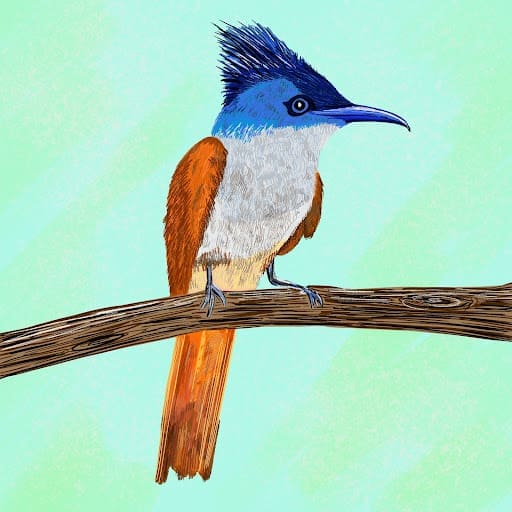
Paradise Flycatcher; Native to Asia
Find ways to channel that inner talent or skill or passion and dedicate a little part of it for the environment around us. Make it visible, make it obvious. It does not matter the rate of change you are causing, simply do what you can and let people see it. The pace will pick up.
Our strategies need to change. Somewhere we have to find the balance between speed of progress and sustainability. Most importantly, each and everyone of us has to decide what is a priority and how it relates to the environment.There is and will continue to be inequality, inequity and unfair situations arising because of geographical distributions, historical events, and our inherent human nature. Are we strong enough to do something selflessly knowing in the core of our hearts it won’t give in return at the next very moment? How much are we willing to care, so as to leave our comfort zone and make an effort? Or are we going to burn it all down and not be bothered by it?
We have to remember, our actions today can shape a better world for the generations yet to come, preserving the wonders of nature for those who follow.
– Sreyashi Basak, wildlife and environmental advocate based in India

